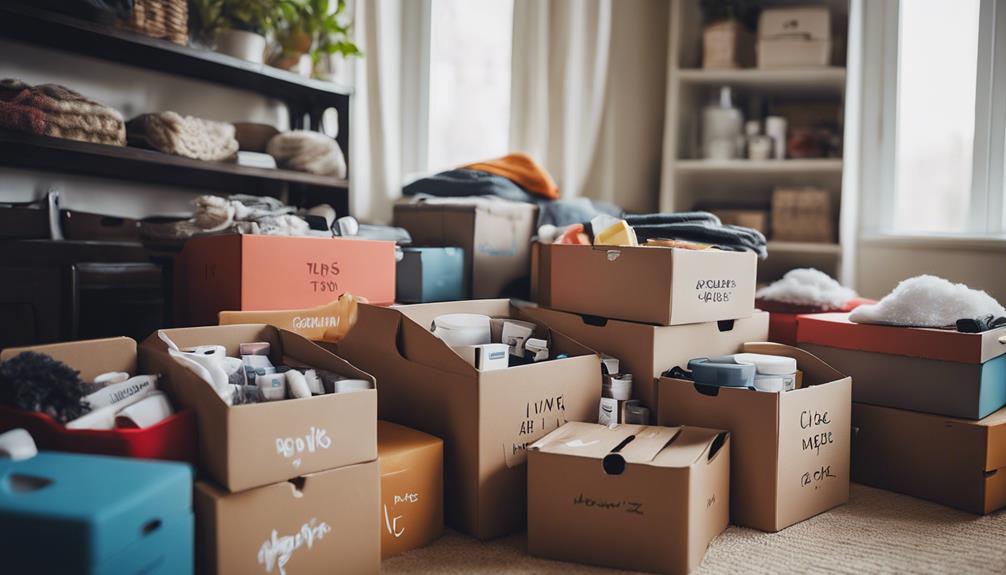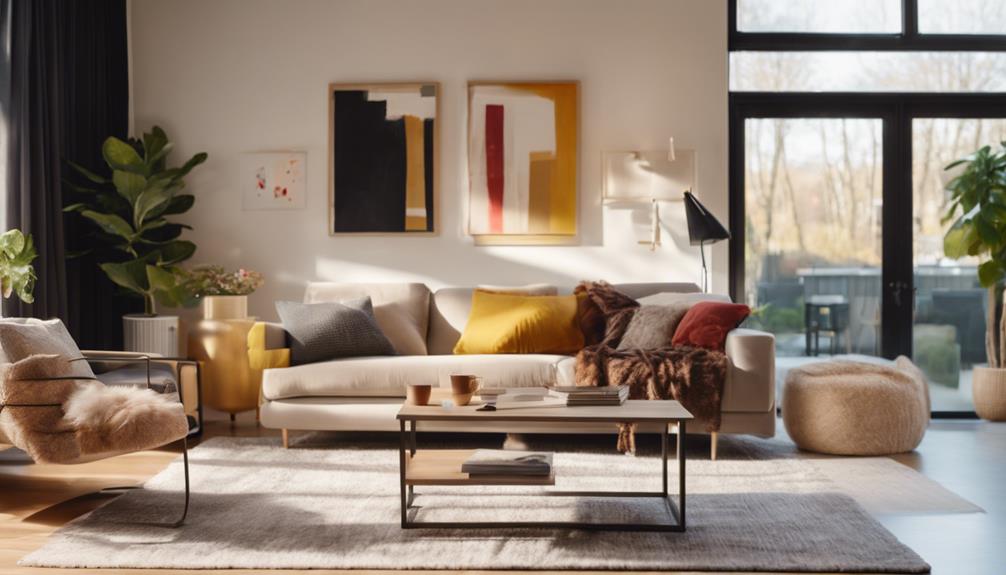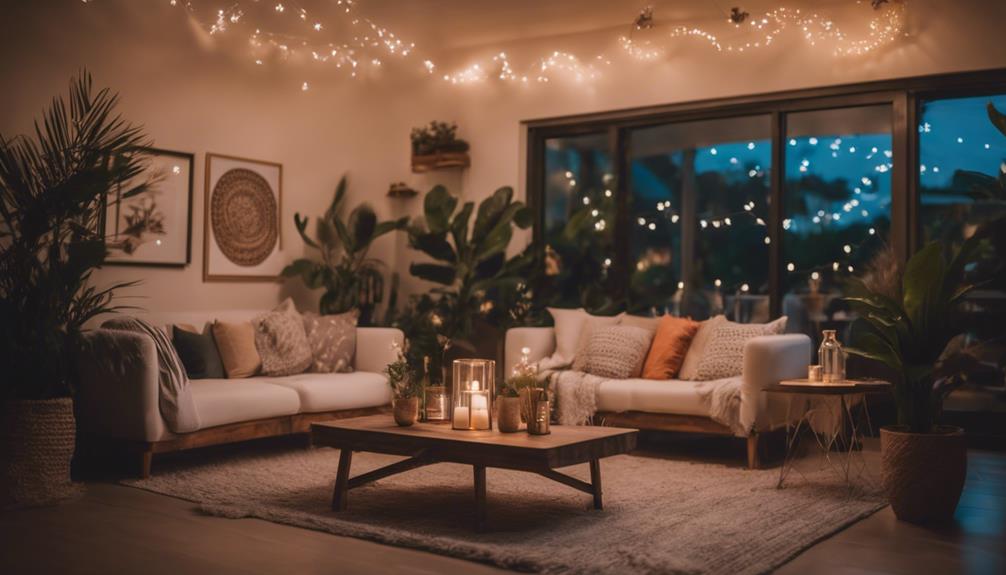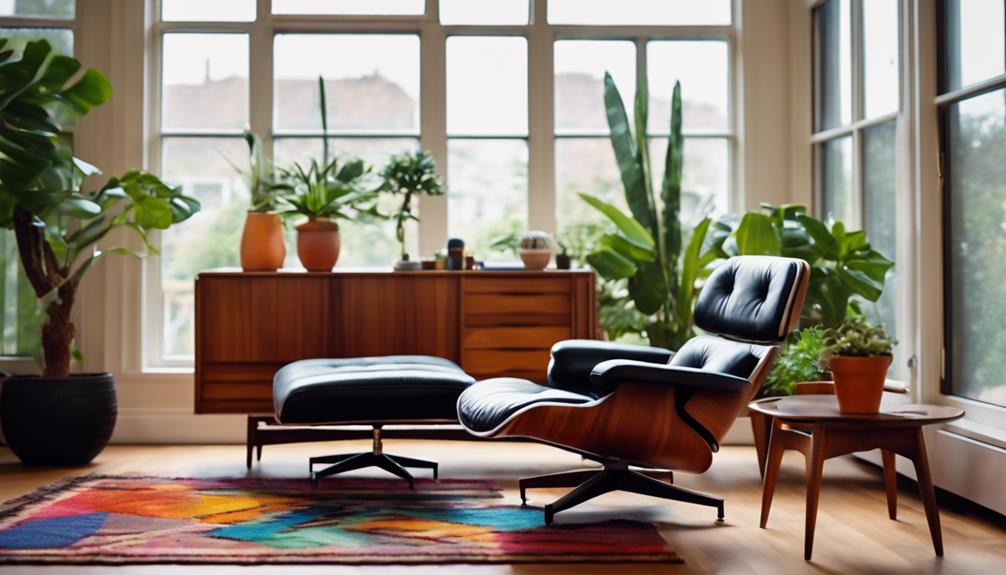Mastering the art of temporary moving means you need to plan ahead and stay organized. Start by considering your length of stay and housing type to determine what to pack. Clear out clutter by sorting items into keep, sell, and donate piles—this simplifies your move. Focus on essentials, making sure to include important documents and any items specific to your new location. Explore storage options, like self-storage units, for items you won't need right away. And don't overlook furniture rentals to keep your space comfortable. There's more to discover about enhancing your experience as you prepare.
Key Takeaways
- Plan ahead by determining your length of stay and necessary items to pack for a smooth temporary move.
- Declutter before moving by sorting belongings into keep, sell, and donate piles to simplify packing.
- Identify and pack essential items, such as important documents and climate-appropriate clothing, to ensure a seamless transition.
- Explore furniture rental options to furnish your temporary space without the hassle of purchasing new items.
Think Ahead for Success
Thinking ahead is crucial, as the length of your stay, location, and type of housing will determine what you need to pack.
For short stays in furnished apartments, you'll only need a few essentials—clothes, toiletries, and maybe a couple of personal items.
However, if you're moving to an unfurnished rental for an extended period, you'll need to bring more belongings, including kitchenware and furniture.
Don't forget to consider important events during your stay. Plan to have everything you need for weddings or tax deadlines accessible.
To avoid panic, make sure essential items aren't tucked away in storage.
Clear Out Clutter Effectively
Moving is the perfect opportunity to declutter your living space and get rid of items you no longer need. Start by tackling each room, sorting through clothes, books, and miscellaneous items.
Create three piles: keep, sell, and donate. Organize a garage sale for items that still have value or use online marketplaces to reach a wider audience. For things that don't sell, consider donating to local charities or shelters. This not only lightens your load but also helps others in need.
Don't forget to dispose of anything broken or unusable. Reducing clutter simplifies your move and sets a positive tone in your new space, making it easier to settle in and feel at home.
Sort Your Essentials Smartly

Identifying your essentials before a temporary move helps streamline the packing process and ensures you have everything you need at your new location.
Start by distinguishing what you'll take with you versus what can go into storage. Focus on these key items:
- Climate-appropriate clothing for your new area
- Important documents like your SSN, passport, and tax forms
Don't forget to include pet care items and cleaning supplies, as they'll be crucial during your transition.
Optimize Your Storage Options
Once you've sorted your belongings, it's time to focus on optimizing your storage options for a smooth temporary move.
Consider using a reputable moving company that offers temporary storage solutions. They can securely store your items until you're ready to move into your new place.
If you prefer a more hands-on approach, look into self-storage facilities with climate control and security features. Portable storage units are another great option, allowing you to pack at your own pace and schedule delivery when needed.
Be strategic about how you organize your items—label boxes clearly and prioritize easy access to essentials.
Streamlining your storage will save you time and reduce stress during your temporary move.
Explore Furniture Rental Solutions

Consider furniture rental as a convenient way to furnish your temporary space without the hassle of transporting heavy items.
With rental services, you can easily create a comfortable home environment tailored to your needs.
Here are a few benefits you'll enjoy:
- Wide Selection: Choose from sofas, beds, tables, and more, allowing you to personalize your space.
- Flexible Terms: Rent for as long as you need, whether it's a few months or a year.
Conclusion
By mastering the art of temporary moving, you can turn a potentially stressful experience into a breeze. This involves careful planning, staying organized, and maintaining a positive mindset throughout the process. Once the move is complete, it’s equally important to settle in and make your new space feel like home, employing strategies to beat postmove blues. These might include decorating your new space with familiar items, connecting with your new community, or setting up routines that bring comfort and stability.
Did you know that 35% of people say they feel overwhelmed by packing and organizing?
By planning ahead, decluttering, and exploring storage and rental options, you can save time and energy.
Embrace the journey ahead, and remember that a little preparation goes a long way.
You've got this! Happy moving!










